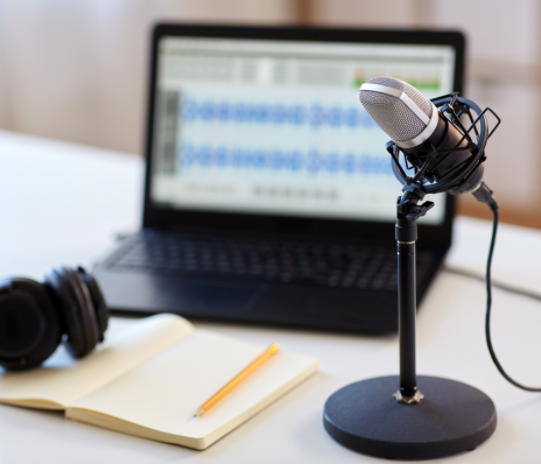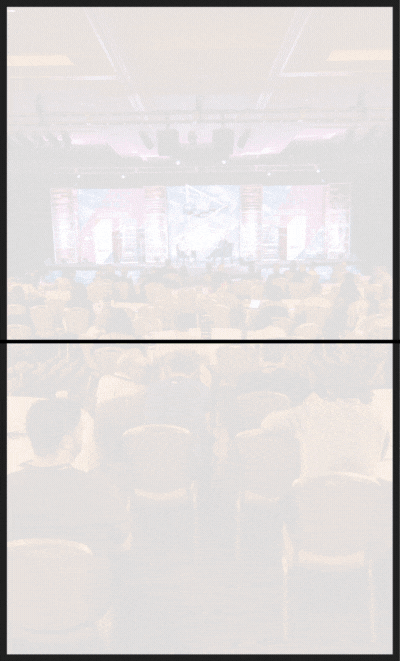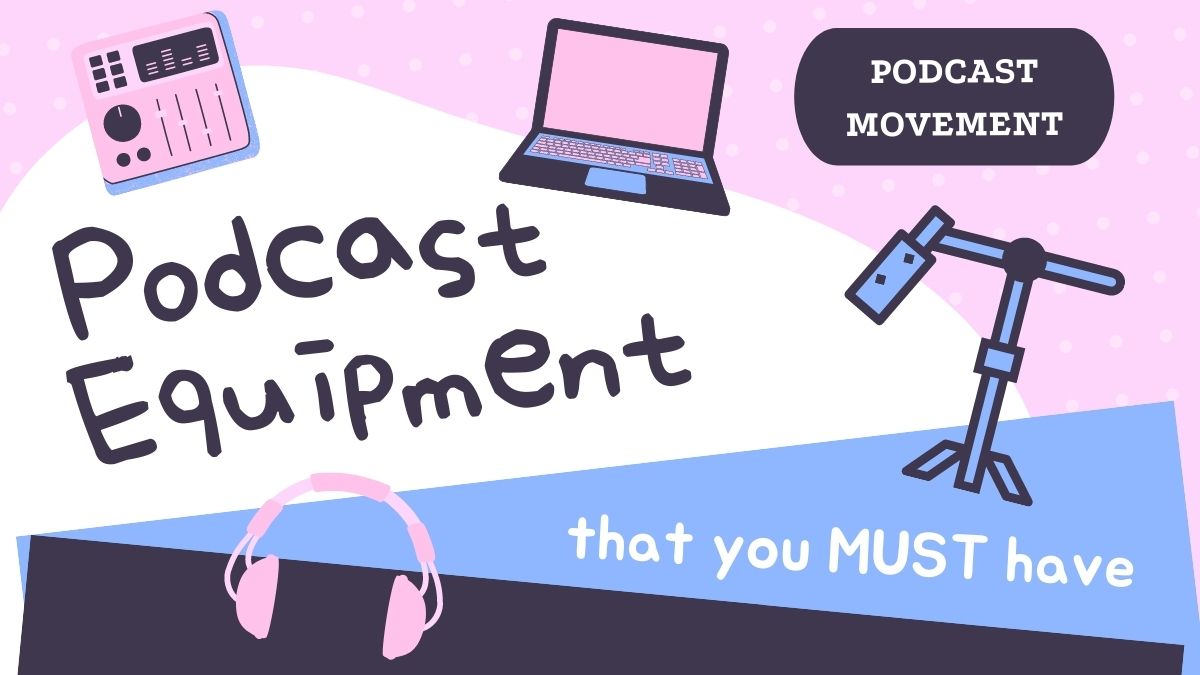

If you’re like most podcasters, partnering with advertisers and sponsors is one of your monetization goals. Sponsor outreach is a key skill you’ll need for a strong start. As a podcast representation and advertising business owner, I’ll provide the tips and tricks you need to create a successful outreach plan.
Step 1: Create A Compelling Podcast Story
Start by clarifying your podcast, the type of content you produce, the audience you reach, and the size of the audience you can deliver.
Advertisers need a comprehensive understanding of the content you create. If your podcast occupies a specific niche, like comedy, true crime, or sports, be sure to emphasize how it stands out from the crowd. If your show is less easily defined, a vague description of the concept (like ‘just two guys talking about life’) will be difficult for a potential advertiser to align with their brand.
Create a brief, descriptive story about your podcast that is easy to understand. Here is an example that offers enough detail for an advertiser to visualize the content-brand connection.
Two Guys Talking breaks down life's hard-to-understand topics in hilarious ways. It serves its listeners, primarily middle-aged men, by showing that they aren’t alone in this crazy world. Each episode is a thoughtful conversation around common experiences and mental health issues. Mid-life crises, career dilemmas, marriage and raising children can be tough. Two Guys Talking offers support on these topics in a fun, easy-to-digest way.
Suddenly your podcast isn’t just Two Guys Talking. It’s an essential mental health podcast that challenges men to face life's issues as they listen. Advertisers such as Betterhelp, TalkSpace, and Headspace might consider this podcast a great fit. Male-oriented clothing, entertainment, and personal care brands may also be happy to work with you.

Step 2: Review Your Podcast Branding
New podcasters need to understand this important truth: Non-descriptive titles and/or cover art will hurt your chances of securing sponsorships. Brands are looking for shows that directly align with their customers. What story does your podcast tell? Your branding should consistently reflect that same messaging.
Your cover art is the first impression everyone has of your podcast, including advertisers. The imagery needs to invoke emotion or tell them what they can expect to gain from your content. As part of the evaluation process, brands will consider if your branding aligns with their company image. Think about the companies you’d like to attract and study the style and tone of their branding. Without imitating what you see, keep that professional image in mind. I suggest hiring a graphic designer to create cover art that reflects the values you want to project.

Step 3: Decide on Embedded or Dynamically Inserted Ads
Next, you need to decide on how you are going to insert the ads into your episodes. This is important because it will affect how many downloads you offer sponsors.

Embedded ads, sometimes called “baked-in” ads, are produced as part of an episode and will remain indefinitely. You’ll need to know how many downloads you’re getting per episode in 30 days.
You’ll need to accurately communicate the size of your audience and the number of impressions/downloads you can deliver during their campaign.
Dynamically inserted ads are digitally inserted into episodes and then removed after a certain period of time. (This is usually based on the length of the campaign.) If you’re running dynamically inserted ads, you’ll need to know how many impressions you can deliver in 30 days or the length of the campaign.
When you’re talking to potential advertisers, you’ll need to accurately communicate the size of your audience and the number of impressions/downloads you can deliver during their campaign. Advertisers will want to know how you collected this information, so be sure to have a clear explanation prepared in advance.

Step 4: Create a Media Kit
A media kit is usually the first thing a sponsor will expect you to send over for review. It is a sales document that should include pertinent information in an organized manner.
A media kit should include the following:
- The description of your podcast that you created in Step 1.
- Podcast cover art that you reviewed in Step 2.
- A brief, engaging bio of the host(s)
- Listener demographics
- Download numbers based on embedded or dynamic insertion from Step 3.
- Pricing and package options
Keep your media kit concise, about 3-5 pages, and make sure it only contains relevant information. I recommend hiring a designer to create your media kit because you want it to be visually appealing. You may be able to use a tool, such as Canva, but ultimately, you’re looking for a piece that will be a quality representation of your podcast and the brand partnerships you'll be looking to create.
A successful media kit must answer this question: Who is your podcast’s typical listener? Understanding your audience is the most important element of positioning your show. Consider gender, education level, household income, marital status, and other details that define where your downloads come from. Develop a listener avatar to guide both content creation and advertiser outreach.
For more information about listener demographics, creating packages, and pricing your podcast, read the first blog post in this three-part series: Podcast Preparedness: Is Your Show Ready To Take On Advertisers?

Step 5: Find Sponsors That Align With You
You can use a variety of outlets to attract sponsors, depending on your needs.
There are online marketplaces where you can list your show, like AdvertiseCast, Podcorn and Zvook. Other options are to partner with networks or representation firms like True Native Media to solicit advertisers on your behalf. Working with a firm can be a smart option if your podcast gets 5-10K+ downloads per episode. If your numbers are still small, direct outreach to specific brands may be a better fit.

Here’s how to begin your list of potential sponsors: Think of brands you regularly use or brands you know your audience would love. Newer podcasters often make the mistake of shooting for big companies with large advertising budgets.
Here’s how to begin your list of potential sponsors: Think of brands you regularly use or brands you know your audience would love.
However, it has been my experience that connecting with the right contact is difficult. Large companies also have strategic plans and agencies they work with and don’t often consider minor advertising opportunities.
My recommendation is to focus on mid-level companies. Direct-to-consumer brands that advertise on Facebook or Instagram can be a great place to start. If your podcast targets a specific industry, do your research on companies that are active in that space.
Once you have a list of potential companies, you will need to find the right contact person for each one. LinkedIn is an invaluable resource if you know how to utilize its features.
- Search for the company on LinkedIn and view their employees.
- Find a person in the marketing department and reach out on the platform.
- You can also use an app like Hunter.io to determine their email address.
My recommendation is to not reach out to any email addresses that start with the following: info@, contact@, help@, pr@, marketing@, or media@. Those tend to go into large receptacles of incoming emails and don’t often receive responses.

Step 6: Initial Podcast Sponsor Outreach Process
Your first outreach message should ask if the person you are emailing is the correct person to talk to about podcast advertising. This is an easy introduction that will usually lead you to the right person, and also shows that you value the recipient’s time. If you open with a pitch right off the bat, there’s a risk of emailing the wrong person. Confirmation goes a long way to produce the results you want.
Once you reach the right person, you must share how you can help the brand, not how the brand can help you. It comes back to how your podcast and listeners can add value to the sponsor.

Step 7: Polite and Persistent Follow-Up

Follow-up is key when looking for prospective advertisers. You aren’t going to secure an advertiser from just one email. It takes time and polite persistence. If you aren’t getting a response from your email, try calling. Connect with the person on LinkedIn. Follow and like the content that person creates. You must be persistent, but don’t get spammy.
You aren’t going to secure an advertiser from just one email. It takes time and polite persistence.
There are certainly a variety of methods for hosts to use to secure advertisers. You may decide to list your podcast on a marketplace. You may find that using a platform that places prerecorded ads on your show is a good option.
However, I have found that while some outlets can generate ad sales for a host, personal outreach and sales can be the biggest money generator. Why? You know your podcast better than anyone else, and are uniquely positioned to communicate its value.
Now that you have best practices for outreach in mind, be on the lookout for the third and final article in my podcast sponsorship series. What should you expect once you secure your first sponsor? How should you prepare to run your first campaign? Successful partnerships begin with preparation, and I look forward to being your guide.




Join the Movement